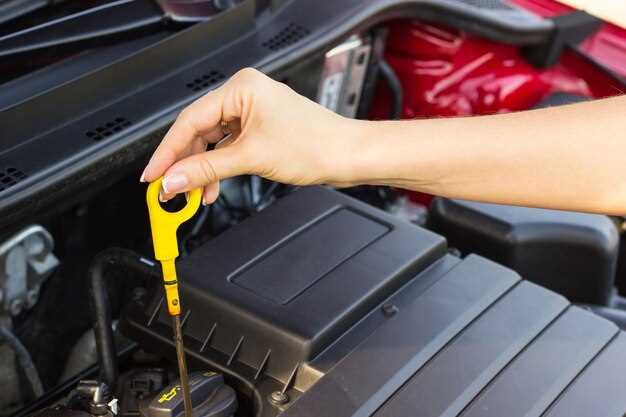
How to Check and Top Up Car Fluids
- Arthur Rodriquez
- 0
- Posted on

Regular maintenance is crucial for ensuring the longevity and performance of your vehicle. One of the most essential tasks in this routine checkup is to assess and replenish your car fluids. These fluids play a vital role in the smooth operation of various systems within your car, including the engine, brakes, and transmission.
Understanding how to check and refill your car fluids can save you from potential breakdowns and costly repairs. Knowing which fluids need regular attention and how to assess their levels can empower you as a car owner. From engine oil to coolant and brake fluid, every component requires your attention to maintain optimal functioning.
In this guide, we will outline the step-by-step process to ensure that your car is always performing at its best by keeping its fluids in check. Whether you are a seasoned mechanic or a new car owner, these tips will help you navigate the necessary maintenance with confidence.
Step-by-Step Guide to Checking Engine Oil and Coolant Levels

Regular checkups of your car’s fluids are essential for maintaining optimal performance. This guide will help you check the engine oil and coolant levels accurately.
Start by gathering the necessary tools: an oil dipstick, a clean rag or paper towel, and a funnel if you need to add fluids. Ensure your vehicle is parked on a level surface and that the engine is cool to avoid burns.
To check the engine oil, open the hood and locate the oil dipstick, usually marked with a bright handle. Remove the dipstick and wipe it clean with a rag. Reinsert the dipstick fully, then remove it again to check the oil level. The dipstick will have markings indicating the optimal range. If the oil is below the minimum mark, it’s time to refill.
When performing a refill, use the appropriate type of oil specified in your owner’s manual. Using a funnel helps prevent spills. Pour the oil slowly, checking the level frequently to avoid overfilling. Once you’ve reached the correct level, replace the dipstick and secure the hood.
Next, locate the coolant reservoir, usually a translucent tank with markings indicating low and high levels. Ensure the engine is cold before checking this to prevent injury. Observe the fluid level; it should ideally be between the minimum and maximum marks. If the coolant level is low, add the appropriate coolant mixture, as specified in your vehicle’s manual, using a funnel to avoid spillage.
After topping up, securely close the coolant reservoir cap. Run the engine for a few minutes and then recheck both the oil and coolant levels, making adjustments if necessary. Regular monitoring of these fluids ensures your vehicle operates smoothly and efficiently.
How to Identify and Refill Transmission Fluid and Brake Fluid

Checking and refilling your car’s fluids is crucial for its efficient operation. Here’s how to identify and refill two important fluids: transmission fluid and brake fluid.
Identifying Transmission Fluid: Start by locating the transmission dipstick, usually found near the back of the engine bay. Pull out the dipstick and wipe it clean with a lint-free cloth. Reinsert it and remove it again to check the fluid level. Transmission fluid is typically red or pink in color and should have a slightly sweet smell. If it appears dark or smells burnt, it needs to be changed.
Refilling Transmission Fluid: If the level is low, use a funnel to add the correct type of transmission fluid as specified in your owner’s manual. Avoid overfilling, as this can cause issues. Check the level again after refilling to ensure it is within the correct range.
Identifying Brake Fluid: Locate the brake fluid reservoir, usually situated near the back of the engine bay on the driver’s side. The reservoir is typically transparent, allowing you to see the fluid level. Brake fluid is usually clear to light yellow. If it looks dark or has contaminants, it’s time to replace it.
Refilling Brake Fluid: If the fluid is low, clean the area around the reservoir cap to prevent contamination during refilling. Open the cap and add the appropriate brake fluid as indicated in your owner’s manual. Ensure the fluid level is between the “MIN” and “MAX” markers. After refilling, securely close the cap.
Regular checkups of these fluids are essential for maintaining vehicle performance and safety. Always dispose of any old fluids following local regulations.
Tips for Maintaining Proper Levels of Power Steering and Windshield Washer Fluid
Regular checkup of your vehicle’s fluids is essential for optimal performance and safety. To maintain the proper levels of power steering and windshield washer fluid, follow these tips:
Start by locating the reservoirs for both fluids. The power steering fluid reservoir is typically situated near the engine. Refer to your owner’s manual for exact locations and specifications. For the windshield washer fluid, the reservoir is usually marked with a windshield icon.
During each fluid checkup, inspect the levels in the reservoirs. Ensure that the power steering fluid falls within the marked minimum and maximum levels. If low, top it up with the appropriate fluid specified in your manual.
For windshield washer fluid, fill the reservoir with the recommended mixture, especially during winter months when antifreeze is necessary. Check this fluid frequently, especially before long trips or during harsh weather conditions.
Monitor the condition of the fluids. Power steering fluid should be clean and usually has a reddish or amber tint. If it appears dark or contaminated, consider flushing the system. Windshield washer fluid should be clear; if it has debris or is discolored, replace it.
Lastly, establish a routine schedule for checking these fluids, ideally every month or before significant trips. Keeping these fluids at proper levels will enhance your vehicle’s performance and ensure clear visibility while driving.